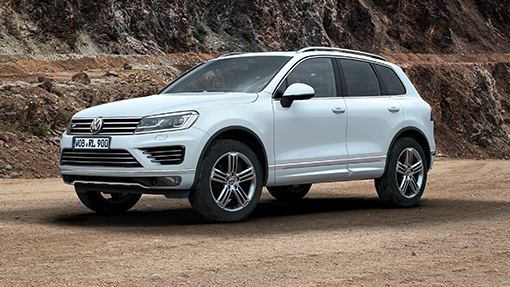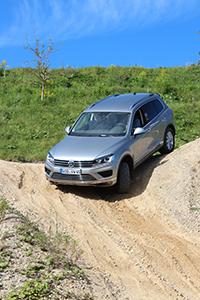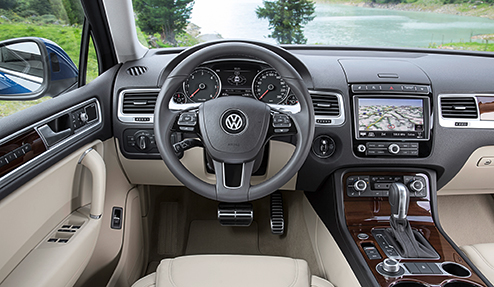Latest Volkswagen Touareg 4×4 drinks less fuel

Volkswagen’s Touareg is one of the more affordable premium SUVs on the market. Oliver Mark headed to Germany to try out its latest incarnation.
Range Rover might be top gun in the world of premium SUVs, but there are plenty of other respectable candidates knocking on its door that come with a more palatable price tag.
One of those – the Touareg – comes from Volkswagen. Notwithstanding the price, the biggest member of the VW family has plenty going for – it shares its underpinnings with more expensive German foe from the Audi and Porsche stables and manages to lug its considerable frame around as efficiently as anything else on the market.
See also: Driven: VW Touareg Hybrid
The first version of the Touareg arrived back in 2002 and changes have been few are far between since then – no surprise given that the company has shifted almost 800,000 of them, with the UK contributing 2,850 last year alone.
 Sounds impressive, yes, but bear in mind that the ubiquitous Golf sold 65,000 times in the UK last year and the little Polo added another 45,000 models to the VW sales figures, so the Touareg is comparatively small fry.
Sounds impressive, yes, but bear in mind that the ubiquitous Golf sold 65,000 times in the UK last year and the little Polo added another 45,000 models to the VW sales figures, so the Touareg is comparatively small fry.
What’s new
Planet Earth’s ozone layer is the big winner with the latest facelift. Like the European tractor market, car manufacturers are under the cosh to pull the reins on exhaust emissions.
It’s been achieved by adding engine start-stop and a coasting system that disengages the driveline once the driver lifts his size nine off the throttle. There’s also an AdBlue system and particulate filter to trim the emissions, though this only needs to be topped up every 15,000km, so should prove to be less aggro than it is on a tractor.
From a driver’s point of view, none of these changes really affect day-to-day driving, although trimming the emissions will lop a healthy chunk off the yearly tax bill and it has also improved economy a mite. The off-road-biased Escape version will eek 41mpg from its diesel engine, so drivers can reasonably expect regular consumption figures to hover about the mid-30s.
Two TDV6 engines remain on the spec list – the first kicks out 204hp and the second is tuned to 262hp – a 17hp rise on its predecessor. Torque has also been upped by 30Nm to 580Nm.
Either engine is mated to an eight-speed transmission, but the clampdown on emissions has seen the V6 petrol/electric hybrid and V8 TDI versions ditched in the UK.

Lookswise
Nothing radical here, aside from a jab of botox to the bumpers and the odd tweak to wheel and colour options. The dimensions are still practically the same as the original, although the car has shed a few pounds since the Touareg’s early days.
Bodywork sits on steel springs as standard, with air cushions a £2,000 option that we reckon is well worth going for. Off-road-loving Escape versions ride 10mm higher when specced on steel coils.
It is probably a nod to the target market that only 2% of Touaregs are sold in Escape guise – most head out of showrooms as the top-spec R-Line, where buyers get a sporty body kit, fancier wheels and lower sports suspension.
Underneath
All three trim levels get four-wheel drive, however, if you’re likely to do a share of genuine off-roading then the Escape is the only option. Off-road gear includes two mechanical diffs – one mounted centrally and one on the rear axle – and a 50:50 torque split between front and rear wheels. Extra underbody tinwork should also protect its belly.
Control of the four-wheel drive system is done through two centre-console dials. The first can select the low box or engage either of the diff-locks, while the second adjusts the height of the air suspension. By-the-book towing is 3,500kg, which puts it right on par with its rivals.
Despite all of the extra emissions gubbins, prices have stayed roughly the same – a cheque for £45,000 will land you a basic Escape version, which is sandwiched by the cheaper SE and top-end R-Line.

